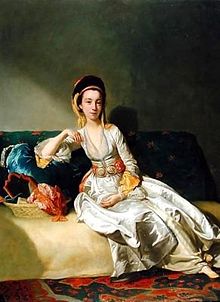 |
| Nancy Parsons @Wikipedia |
Nancy Parsons
(1735-1815)
British courtesan & political mistress.
Wife of:
Her lovers were:
4) John St. John."...The other favoured admirer, whom Kitty preferred in many respects to Lord 'Bob,' was the grave and sober John St. John, a younger brother of Lord Bolingbroke, a plodding barrister and a sedulous member of parliament, with some of the ambition but non of the ability of his great uncle. He lived in Lincoln's Inn, and had not yet given up hope of attaining eminence in his profession, and of making his mark in the House of Commons. His enemies accused him of being dull, but admitted that he was harmless; and the Selwyn clique, who spoke of him as 'our poor counsellor,' do not appear to have had a high opinion of his powers. Nevertheless, by some means or other he had found favour in Kitty's eyes, and she was a frequent visitor at his chambers." (Bleackley, 1909, pp. 154-155)
6) Gilly Williams.
7) Lord March.
8) Lord Palmerston.
9) Lord Robert Spencer.
"Lillie immediately became involved with the Earl of Shrewsbury, but that arrangement broke up the following January once rumors of a divorce began to circulate and creditors started to hound her husband. . . ." (The Honest Courtesan)

Son of: John Holland, a baker.
"Holland was said to have been the first man Baddeley truly loved, and he is said to have perfected her acting style, easy and unembarrassed, with an astonishing power to express the passions of love and grief. . . ." (Companions Without Vows: 202)
"The union between Sophia and Robert Baddeley was not a match made in heaven, however. Things came to a head at the height of her fame and Sophia realized that she could support herself with some financial assistance from various benefactors to whom she became a courtesan, primarily the 1st Viscount Melbourne. After leaving Robert Baddeley, Sophia moved in with Charles Holland of Drury Lane Theatre and lived with him until he died of small pox (in 1769). She is not mentioned in his will though which was written whilst he was suffering from smallpox." (Georgian Era)
"Holland died of smallpox at the age of 36. He did not marry. He was engaged to the actress Jane Pope, but she broke off the engagement when she found him boating at Richmond with the actress Sophia Baddeley. He was known for having affairs; the one with Mrs. K. Earle led her husband, William Earle, to prosecute Holland successfully." (Wikipedia)
"Holland was a good-looking, manly action, with a strong, resonant, well-toned voice, and great power of application. . . .) (Wikisource)
4) Dr. Hayes.
5) Duke of Northumberland.
6) Edward, Duke of York.
"Even before the couple’s separation, Sophia was known to be frequently visited by H.R.H. the Duke of York and that he had graciously presented her with a lock of hair which she carefully preserved throughout her career. Sophia was famous for her beauty and her extravagant lifestyle. Despite their separation, the Baddeleys did perform together on the London stage." (Georgian Era)
" . . . According to Steele's account, Baddeley had already had a fling with Edward, Duke of York, when she separated from her husband by 1767 . . . ."
"Of all the actresses with whom George dallied the most enchanting to him was Mrs. Sophia Baddeley, a woman of exceptional beauty with a vivacious personality. A leading actress and singer at Covent Garden and Drury Lane, she was not averse to selling her sexual favours to a succession of admirers, among whom ranked the Duke of York, the Hon. William Hanger (George’s eldest brother), the Lords Grosvenor and Melbourne, Sir Cecil Bishop, Hananel Mendes da Costa, a wealthy merchant trading in copra with India, and George Garrick, the theatre manager.
During the 1771-72 season Sophia quit the stage. “During this recess,” revealed the press, “Captain Hanger was introduced to her and so fervently pleaded the cause of love that our heroine yielded to his intreaties. The Captain still entertains a very great regard for her, accompanies her to all public places, and protects her with a spirit that does him honour. An instance of his behaviour will illustrate our observation. At the opening [in January 1772] of the Pantheon,” a subscription venue offering fashionable entertainment such as balls, concerts and masquerades, “the proprietors endeavoured to exclude all women whose characters were suspicious, many of them having made their appearance on the first night, which greatly hurt the delicacy of some squeamish women of quality, whose reputations were as equivocal as those of the females they were desirous of expelling. Captain Hanger accompanied Mrs. Baddeley on the second night, when the doorkeeper refused her admittance, saying he was authorised to reject what company he thought improper. Captain Hanger insisted upon knowing his authority, to which the doorkeeper replied he had the proprietors’ orders for what he did. Captain Hanger then ordered the doorkeeper to bring the proprietors to him who had given these commands. The servant excused himself by saying they were not present. Captain Hanger then bid him produce the master of the ceremonies as he was the ostensible manager. Captain Donnellan did not chuse to appear upon the occasion but gave orders for Mrs. Baddeley’s admission ― and this resolute behaviour of Captain Hanger obliged the proprietors to lay aside all thoughts of requiring every female who desired admittance to the Pantheon to bring a certificate of her virtue in hand.”" (George Hanger---His Early Life)
8) George James Cholmondeley, 1st Marquess of Cholmondeley.
15) George Pigot 1st Baron Pigot (1719-1777)
President of the British East India Company
"In 1764, Sophia eloped with Robert Baddeley, a Drury Lane theater player almost twice her age. The marriage was not a happy one, but Robert Baddeley recognized an opportunity before him when a rich Jewish friend of his, 'Mr. Mendez' approached him about becoming involved with Sophia. Robert encouraged her to accept, saying that such rich friends were not to be slighted. The Baddeleys filed private articles of separation in 1770, and Sophia became involved with Mr. Mendez. . . ." (everything2)
"As Lady Melbourne improved her husband's estates, Peniston Lamb was in the throes of an affair with Mrs. Sophia Baddeley, a celebrated actress whose notice was 'sufficient to give credit and eclat to a man of the ton . . . A portrait of Sir Joshua Reynolds . . . captures the charm of this coquettish woman, whose lovers included William and John Hanger, Lord Sefton, Lord Palmerston, and the duke of Queensbury, among others. . . When Peniston met her in 1770, he was only twenty-five and had been married for just ten months."(Byron's "Corbeau Blanc": 17)
"Lord Melbourne took her up and became her lover, protector and provided. He set her up in Grafton Street and financed her very expensive tastes in fashionable clothes, a carriage and servants and expensive jewelry. . . . " (The Berties of Grimsthorpe Castle: 204)
British peer, racehorse owner and art collector
1. Captain Norton.
2. Charles Maynard, 2nd Viscount Maynard, mad 1776
Her lovers were:
Her lovers were:
1) Arnold Nesbitt.
British government contractor.
2) Augustus Henry Fitzroy, 3rd Duke of Grafton.
 |
| Augustus Henry Fitzroy 3rd Duke of Grafton @Wikipedia |
Lover in 1763-1777.

3) Francis Russell, 5th Duke of Bedford
Lover in 1784-1787.
4) John Saville, 3rd Duke of Dorset.
Lover in 1784-1787.
 |
| John Saville 3rd Duke of Dorset @Wikipedia |
Lover n 1769.
5) Richard Rigby.
5) Richard Rigby.
British government minister.
6) William Petty, 2nd Earl of Shelburne.
 |
| William Petty 2nd Earl of Shelburne @Wikipedia |
Her lovers were:
1) Sir Charles Bunbury.
4) John St. John.
5) George Selwyn.
6) Gilly Williams.
7) Lord March.
8) Lord Palmerston.
9) Lord Robert Spencer.
" . . . Miss, or Mrs., or Polly Kennedy,---for the lady was notorious by all three names,---was one of the Phrynes of that debauched time. She was of Irish family, and had two brothers, Matthew and Patrick, young men who had risen, by their sister's help, from low estate---a contemporary magazine says they began life as alehouse waiters---to something sufficiently like gentility to give them acquaintances in the set to which their sister's admirers belonged---Sir Charles Bunbury, the St. Johns, Lord March, Lord Robert Spencer, Gilly Williams, Lord Palmerston, George Selwyn, and others of Sir Joshua's gayer intimates. . . ." (Life and times of sir Joshua Reynolds: 194)
Her brothers' keeper.
Her brothers' keeper.
"Miss Kennedy, alias Jones, was of Irish family and had two brothers, Matthew and Patrick. These brothers rose to higher status that their original profession of alehouse waiters through the influence of their sister Polly, who was an intimate acquaintance of Sir Charles Bunbury, the St. Johns, Lord March, Lord Robert Spencer, Gilly Williams, Lord Palmerston and George Selwyn among others. The Kennedy brothers took part in a drunken riot in Westminster, which caused the death of a night-watchman. Both men were convicted to murder and sentenced to be executed, but through the intervention of Miss Jones' 'friends', the King had the sentence commuted to 'transported for life'. (Buscot Park)
 |
| Lillie Langtry |
Lillie Langtry (1853-1929)
British actress, courtesan & royal mistress.
Daughter of: William Corbet Le Breton, Dean of Jersey & Rector of St. Saviours, & Emilie Charlotte Martin.
Wife of:
1. Edward Langtry (1877-1899), wealthy Irish landowner, mar 1874
2. Hugo Gerald de Bathe, 5th Baronet (1871-1940), mar 1899, div 1929
Her lovers were:
1) Arthur Jones (1854-1930)
Lover in 1880
Arthur's personal & family background.
"At the same time as Lillie was being disturbed by Whistler she was drawing nearer and nearer to an acquaintance from childhood. Arthur Jones was the catalyst for her downfall. He was a friend from Jersey, one of the seven illegitimate children that Lord Ranelagh had with his long-suffering mistress. Bachelor and rake that he was, the keeping of a loyal common-law wife was not the least surprising of his many quirks. On the birth certificate her name was given as Mary Edwards Elliott, of 4 Park Place, St. James's Parish Westminster, though she seems to have called herself both Mary Elliott and Mary Edwards when the occasion suited. Otherwise we know very little of her except that she must have loved Ranelagh to bear him so many offspring, with so little hope of the official status of a wife, and also that her charms must have been persuasive, since she subsequently found a man prepared to overlook all seven of her indiscretions, and make her an honest woman at last." (Lillie Langtry: Manners, Masks and Morals)
"When she did finally fall in love, it was with a childhood friend, Arthur Jones, sadly unencumbered by wealth. Trapped in the glittering aspic of fame, Langtry retained all her insurance policy lovers until the inevitable happened and she became pregnant. Forced into hiding, both from society and her husband, Ned, she writes daily to her lover. It is at this point that the difficulties of her situation are outlined most poignantly by Beatty, drawing on the hitherto unpublished letters written to Arthur Jones, who carefully preserved them in a green leather case." (The Observer)
Pregnant with Arthur Jones?.
"In April 1879, Langtry started an affair with Prince Louis of Battenberg, although she was also involved with Arthur Clarence Jones (1854-1930), an old friend. In June 1880, she became pregnant. Her husband was definitely not the father; she led Prince Louis to believe that it was he. . . Given some money by the Prince of Wales, Langtry retired to Paris with Arthur Jones. On March 8, 1881, she gave birth to a daughter, Jeanne Marie. The discovery of Langtry's passionate letters to Arthur Jones in 1878 and their publication by Laura Beatty in 1999 support the idea that Jones was the father. . . . " (Cedar & Willow)
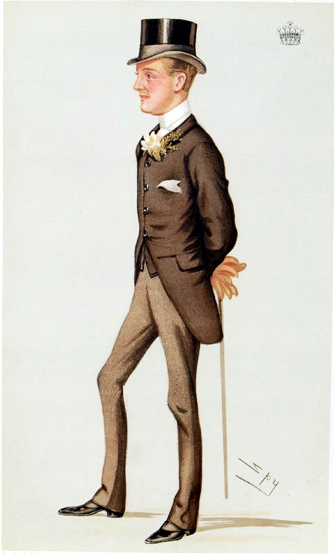 |
| Charles Chetwynd-Talbot @Wikipedia |
2) Charles Chetwynd-Talbot (1860-1921)
20th Earl of Shrewsbury
Lover in 1879-1880.
Husband of: Ellen Mary Palmer-Morewood (1882-1921), mar 1882
"In July 1879, Langtry began an affair with the Earl of Shrewsbury; in January 1880, Langtry and the earl were planning to run away together. . . ." (Wikipedia)
Sportsman, businessman and innovator.
" . . . Under his patronage, Clement Talbot Ltd was founded in 1903 to import the popular French Clement car into Britain; the Talbot car brand was named after him. He was a friend of King Edward VII, and a keen sportsman and businessman. He was High Steward of Stafford in 1892. As well as being a race-horse owner, his interests included fox-hunting, polo and yachting. Above all, he was a noted 'whip' (driver). He occasionally drove the 'Greyhound' coach service between his other home, Alton Towers, and Buxton. He once travelled the 121 miles from Llandudno to Alton, in a day, even having time to stop to watch an hour's horse-racing at Chester. In London, the Earl ran his own cab company, owning 210 cabs and 365 horses. He was a great innovator: he developed solid rubber and pneumatic tires for carriages, and 'noiseless' horse shoes."
" . . . [After her break-up with Edward VII] Lillie, for her part, embarked on an affair with a younger man -- the teenage Lord Shrewsbury, who was just nineteen. One afternoon Bertie called unexpectedly (Lillie had tried to put him off, but he didn't receive her note and found her with Shrewsbury. According to the story Lord Derby heard, the lovers were discovered in flagrante, and a terrible row ensued. Lillie even thought of marrying Shrewsbury, but decided against, as she found him 'quite as uneducated and much more jealous than Ned . . . and he gets worse every day -- In fact I should despise him in a month.'" (Bertie: A Life of Edward VII: 221)
"As Lillie left London, holiday-bound, her romantic interests shifted again, and widened. She went first, in July, to Oakley Court, Lord and Lady Otho Fitzgerald's house at Taplow. Among the house party was the nineteen-year-old Lord Shrewsbury (one of the candidates for Wilde's 'young Euphorion'), with whom Lillie had struck up a serious flirtation. He, that is, was serious; she was flirting . . . She had been introduced to him during the season by the root-eating Violet Fane. She had even been asked, by his mother, in the best Society tradition, to look after him. 'An attachment to a married woman would keep him out of mischief.'. . . ." (Lillie Langtry: Manners, Masks and Morals)
 |
Charles Henry John 20th Earl of Shrewsbury & Waterford |
The 20th Earl of Shrewsbury's other lovers were:
1. Ellen Miller-Mundy, Countess of Shrewsbury (1856-1940)
Wife of:
1. Alfred Edward Miller Mundy, mar 1873, div
2. Charles Chetwynd-Talbot, 20th Earl of Shrewsbury, mar 1882
"Charles Chetwynd-Talbot, 20th Earl of Shrewsbury wreaked havoc when he eloped with the very married Ellen Miller-Mundy. She managed to divorce her husband and marry the Earl only months before the birth of their son, Viscount Ingestre, in 1882. Unfortunately, the Earl and Countess separated soon after, and though Lord Shrewsbury could re-enter society, no amount of support from his powerful sisters–which included Theresa, Marchioness of Londonderry–facilitated her re-entrance. Due to this gross breach of etiquette, Lady Shrewsbury spent the remainder of her life plagued with monetary troubles and largely ostracized from society until her death in 1940." (Edwardian Promenade)
" . . . In 1880 Ellen Miller-Mundy (granddaughter of the 7th Lord Byron) had been married for seven years and had one small daughter. She fell in love with the 20-year-old Earl of Shrewsbury and they eloped to Paris. Her husband divorced her, and she and the Earl were married in 1882, their son being born shortly afterwards. They were banished from Court but lived on this country estate, and the Countess survived to the age of ninety. . . ." (Victorian Women: 124-125)
"He inherited the title while young, and proceeded to ruin his prospects by eloping with a married woman, Ellen Miller-Mundy, nee Palmer-Morewood, wife of a very rich commoner and granddaughter of the 7th Baron Byron . . . The couple had one son, Viscount Ingestre, who died in the lifetime of his parents . . . Lord and Lady Shrewsbury separated afterwards, and Lady Shrewsbury lived on alone plagued by monetary difficulties and ostracized by society. Not all the influence of Lord Shrewsbury's two well-married sisters, nor his own position served to rehabilitate her, such being the mores of the Victorian and Edwardian age." (Grace's Guide)
3) Edward VII of Great Britain.
Lover in 1887-1880.
"Lilly Langtry was the 'The Jersey Lily' and a Victorian actress who became the lover of Edward VII when he was Prince of Wales during the latter years of Queen Victoria’s reign. The King had seen her on the theatre stage and contrived to sit next to her at a dinner party–having placed her husband at the opposite end of the table. Edward VII had a serious weakness for beautiful and very feminine women, and Lilly Langtry captured the King’s heart and imagination. They used to meet secretly in the upper rooms of Rules Restaurant on Maiden Lane in Covent Garden. Her London home was on Pont Street in Knightsbridge which is now a boutique bed and breakfast. This love affair captured the imagination of an entire era. Queen Alexandra looked the other way, and the Prince of Wales carried on his affair with this very talented actress." (tmooresr, 2010, September 13)
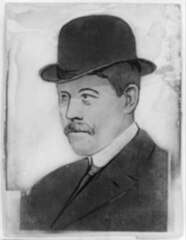 |
| Frederic Gebhard @Wikipedia |
4) Frederic Gebhard (1860-1910)
Lover in 1882-1891.
American racehorse owner.
Son of Frederick Charles Gebhard & Kate Davis.
Husband of:
1. Louise Hollingsworth Clews, mar 1894, div 1903.
2. Marie Wilson mar 1906
". . . While touring America throughout the 1880s, she openly traveled with a wealthy admirer, Freddie Gebhard, whom she had met when she arrived in New York. Gebhard's reaction to negative newspaper articles was outrage, but Lillie understood that all publicity was food for box office sales, and repeatedly defused Gebhard's anger. . . ." (Women in the Arts in the Belle Epoque: 56)
A shower of gifts from a patron.
" . . . She was an even bigger hit in the US than she had been at home, and her box office receipts broke all previous records. Nor had she entirely given up her previous career: she found a new patron in the person of Freddie Gebhard, a multi-millionaire who bought her a townhouse in New York and a private railway carriage built to her specifications. She eventually became a US citizen and divorced Langtry in 1887, but though she and Gebhard remained together until 1891 they never married. He bought her a whole stable f thoroughbred horses, and she enjoyed modest success racing them; she also bought a vineyard and winery in California in 1888, and though she sold it in 1906 it still bears the name Langtry Farms. She also sold endorsements of soap and cosmetics, becoming one the first celebrities to do so." (The Honest Courtesan)
Gebhard's personal & family background.
"In America as in Europe Lillie had many suitors the most prominent of these was Freddie Gebhard a rich industrialist from New York City who showered Lillie with gifts including a Pullman Railway carriage named 'Lalee' worth over half a million pounds. His father and grandfather were merchants and importers in New York City and his mother’s family were involved in real estate in New York and New Jersey. Although, he had no “real job”, Freddie bred and raced thoroughbreds before he met Lillie Langtry and was well known in horse racing circles. He also bought, bred and raced steeplechasers. After he and Lillie Langtry parted ways, he married Louise Hollingsworth Morris, who was a Baltimore “belle”." (The Life of Lillie Langtry)
5) George Alexander Baird of Stichill (1881-1893)
"Back in England in 1890, Lillie began to develop an interest in horse racing. She became friends with Lord Hugh Lonsdale and George Chetwynd, and through them met the Scottish millionaire George Baird who owned a stable of thoroughbreds. He was an obsessively jealous and brutal man, who beat her frequently, but would pay her '£5000 remorse money' afterwards. In this way she came to own a fine chestnut colt named 'Milford', who won his maiden race at Kempton Park. She was able to refuse the offer of £10,000 for him after he won the Royal Two Year Old Plate. Lillie, at this time, was living in Pont Street, London while at the other end of the same street stood St Columba's Church, the Scots Kirk, which had been built with a very generous donation from George's uncle, James. In the autumn of 1891, George Baird, known as 'The Squire', returned to Scotland, as he usually did at that time of year, for the racing at Ayr, but, on this occasion, he came to follow Lillie on her tour of the north. When Lillie had finished her tour, she went back down to London, while George stayed on for the shooting." (Stichill Scotland)
6) Hugh Lowther, 5th Earl of Lonsdale (1857-1944)
English nobleman & sportsman
"Almost an emperor; not quite a gentleman"
Physical appearance & personality.
"Six feet tall, blonde and with the athletic build of a skilled boxer, rider and yachtsman, the 5th Earl was an imposing figure. . . . " (Henry Poole)
Unlimited funds at his disposal.
"In 1882, Lord Lowther's brother St. George, 4th Earl of Lonsdale, died aged 27 leaving his brother, 25, in possession of 150,000 acres of land, a six-figure annual income, revenue from Cumbrian coal mines and principal residence Lowther Castle as well as Whitehaven Castled and a Nash-designed London townhouse at No. 15 Carlton. . . ." (Henry Poole)
Lover in 1879-1881.
"She began another affair in 1879 with Prince Louis of Battenberg and also with an old friend Arthur Jones, but in June 1880 found out that she was pregnant. Her relationship with the Prince of Wales was essentially over by this time, meaning the father's identity was torn between the Prince of Battenberg or Arthur Jones. She gave birth to a daughter, Jeanne Marie, in Paris on 8th March 1881 who later married the politician Sir Ian Malcolm in 1902." (The Genealogist)
"But it seems Langtry was never completely exclusive to Bertie and in 1879 she met Prince Louis. Born in Graz, Austria, in 1854, he was the son of Prince Alexander of Hesse and his wife Countess Julia von Hauke. He grew up speaking German, Italian and English and was encouraged by Queen Victoria’s daughter Princess Alice, the wife of his cousin, to join the British Navy in 1868, thereby automatically earning British citizenship." (Daily Telegraph)
Affair's end & aftermath.
"By the time Edward Langtry went bankrupt in 1879 . . Lillie had found other suitors with many seeking her hand in marriage, though still married to Langtry, who refused to divorce her. Her latest escort was Prince Louis of Battenberg, Bertie's nephew, but when she became pregnant, she left for France to avoid a scandal. Her daughter Jeanne-Marie was born in 1881. . . . " (Lillie Langtry: The "Jersey Lily" and George Baird of Stichill)
 |
| Moreton Frewen |
9) Moreton Frewen (1853-1924)
" . . . One of her earliest lovers was Moreton Frewen, a good-looking young adventurer and horseman. Her opening gambit was to stare at him with large blue eyes and ask, 'What are your spiritual beliefs?' Suitably impressed the handsome Frewen was soon in hot pursuit. He was soon rewarded. In return he was permitted to present her with a splendid chestnut hack, teach her to ride it, and be seen with her in Rotten Row. By then he had evidently served his turn. She wanted something more than penniless, good-looking lovers, and as her fame spread there was no problem getting what she wanted." (Edward the Rake)
". . . He did well in marriage, being wed in 1881 to a striking New York socialite, Clara Jerome. Moreton was a difficult and unfaithful husband, including an affair with the popular actress, Lily Langtry. . . ." (Find A Grave)
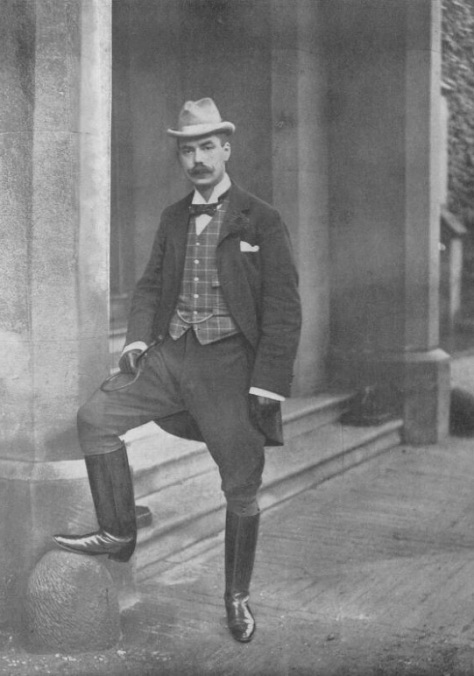 |
| Robert Peel |
10) Robert Peel, 4th Baronet (1867-1925)
Son of Robert Peel, 3rd Baronet & Lady Emily Hay
Husband of Mercedes de Graffenried.
"No sooner had she returned to London, than she met up with Robert Peel, who had fallen for her in a big way. He persuaded her to go off to Paris with him - she saw the chance to shop in the Paris Fashion Houses at his expense. When the Squire got back to London, and found she had gone off to Paris, he immediately went in pursuit. He beat Lillie so severely that she ended up, bloody, battered and bruised, in hospital for two weeks, nursing two black eyes, a swollen nose and covered in weals. He also tore all her clothing to shreds and smashed up the hotel room. A warrant for the arrest of the Squire was issued by the gendarmes, but, as it happened, he was already in the cells following another fracas at the brothel to which he had gone after the assault at the hotel." (Stichill Scotland)
" . . . His relations with women had been the subject of scandal on a scale that must surely have reached the ears of Drayton and Fazeley. He was known to have been the lover of the actress Lillie Langtry, an honour he shared with the Prince of Wales; another of Lillie's lovers beat her viciously after learning of her trysts with Sir. Robert." (Bright Particular Stars: A Gallery of Glorious British Eccentrics: 251)
"Robert Peel, the younger, had served as a Lieutenant in the Staffordshire Yeomanry, wrote two books – ‘A Bit of a Fool’ and ‘An Engagement’ – but his standing in society could not protect him from a weakness for gambling. Here was a man who had ‘broken the bank’ in Monaco netting no less that £12,000. However, his losses were greater than his winnings, and in 1893 had been declared bankrupt. When his father, the 3rd Baronet, died in 1895 he might have been forgiven for thinking his problems were behind him. However, just three years later he was a confirmed bankrupt for a second time. It happened again in 1901, 1903 and 1910, each time managing to avoid paying back any of his creditors. His marriage to Mercedes, daughter of Baroness de Graffenried, of Switzerland, in 1897, might have provided respite but it was a false hope." (House and Heritage)
"One of her high profile relationships was with the Crown Prince Rudolf of Austria-Hungary, who gave her an emerald ring. After an argument she threw the ring into the fire. The Prince anxiously tried to rescue the ring from the flames. Lillie was disgusted, 'I couldn't love him after that." (The Legends of London)
Physical traits & personal character.
"The Crown Prince Rudolph of Austria was a callow youth who burst upon the horizon of London one spring. Still in his teens, he was more or less in charge of a tutor . . . Prince Rudolph was tall, slight, fair-haired, but not good-looking, with deep-set grey eyes and the prominent Habsburg lip. He seemed very headstrong and impulsive, and was, I though,a thoroughly spoilt child. Being heir apparent to the Austrian throne, he was extensively entertained,and I think he made the most of his temporary emancipation from the rigid etiquette of the Viennese Court." (The Days I Knew by Lillie Langtry,: 144)
 |
| Thomas Heron Jones 7th Viscount Ranelagh @Wikipedia |
12) Thomas Heron Jones, 7th Viscount Ranelagh (1812-1885)
"Later that April, on a visit to the Aquarium at Westminster, the longed-for meeting with a member of Society happened. Lord Ranelagh, who had property on Jersey, was there with two of his daughters who knew Lillie, and he invited the Langtrys to spend a few days at his country property in Fulham. Lord Ranelagh had never married the mother of his seven children, and with his foppish appearance, tightly corseted waist and rakish top hat, he cut a somewhat unconventional figure in Society. Staying with him in the relaxed atmosphere of the countryside (that Fulham was at the time) gave Lillie the opportunity to ask him to help her meet some interesting people. And why not? Despite her poverty, Lillie was beautiful and acceptable, and jaded Society needed a bright new star." (Cupid and the King: Five Royal Paramours: 305)
Daughter of: Valentine Snow, a sergeant-trumpeter & Mrs. Elizabeth Steele.
Wife of: Robert Baddeley, British actor, mar 1663, div 1670. [Georgianera]
" . . . When she babbled of the peerage her papa smote her white skin and pummelled her; and, this trick of his increasing discontent, we are no whit surprised to behold the maiden eloping, when opportunity offered, from her home. . . ." (The Theater: A Monthly Review and Magazine: 139)
Sophia's brief profile.
" . . . When she babbled of the peerage her papa smote her white skin and pummelled her; and, this trick of his increasing discontent, we are no whit surprised to behold the maiden eloping, when opportunity offered, from her home. . . ." (The Theater: A Monthly Review and Magazine: 139)
 |
Sophia & Robert Baddeley |
"Sophia Baddeley, born in 1745, was a daughter of Valentine Snow, a trumpeter at the court of George II. She learned to sing from her father. he eloped with Robert Baddeley, a distinguished actor, at the age of eighteen or nineteen, went on the stage, and soon achieved fame. Possessing a delicate loveliness, she sang light and frivolous songs superbly. She soon parted from Baddeley and went from lover to lover... The 'divine Baddeley' was, unfortunately for her, frivolous, vain, empty-headed, and wildly extravagant. Pursued by a fraction of the House of Lords, she came to prefer what seemed to be the ease of a mistress to the grease of the actress. She produced at least two children after 1777. Worn by dissipation, she turned to the solace of opium. She was supported by kind fellow actors during the last years of her life and died in Edinburgh in 1786." (Companions Without Vows: 46)
Sophia's physical appearance & personal qualities.
" . . . Sophia was born a white-skinned beauty with a fine style of Grecian face and cultivated an 'inexpressibly' soft and feminine air. [She was ] Endowed with a beautiful singing voice with 'an enchanting soft tone,' . . . ." (Companions Without Vows: 200)
A marvel of beauty at 18.
"Sophia Baddeley (nee Snow) was the daughter of one of His Majesty's sergeant-trumpeters, and was born in the parish of St. Margaret, Westminster, in the year 1745. At the age of eighteen we fund her a marvel of beauty, endowed with a fine voice, well-educated, a good musician, with a flighty and frivolous mind, and a goggling girlish adoration for laced silk coats and coronets. . . ." (The Theater: A Monthly Review and Magazine: 139)
Sophia's physical appearance & personal qualities.
" . . . Sophia was born a white-skinned beauty with a fine style of Grecian face and cultivated an 'inexpressibly' soft and feminine air. [She was ] Endowed with a beautiful singing voice with 'an enchanting soft tone,' . . . ." (Companions Without Vows: 200)
A marvel of beauty at 18.
"Sophia Baddeley (nee Snow) was the daughter of one of His Majesty's sergeant-trumpeters, and was born in the parish of St. Margaret, Westminster, in the year 1745. At the age of eighteen we fund her a marvel of beauty, endowed with a fine voice, well-educated, a good musician, with a flighty and frivolous mind, and a goggling girlish adoration for laced silk coats and coronets. . . ." (The Theater: A Monthly Review and Magazine: 139)
Courtesan's charm that captivated men & delighted women.
"Around this time Peregrine became enamoured along with many other gentlemen and rakes about Town by a famous courtesan who held court in the demi-monde of courtesans and aristocratic and rich men. She was Sophia Baddeley and she was considered to be beautiful, particularly her face which captivated men and even delighted ladies. he was an actress at Drury Lane and a singer and worked at Ranelagh and Vauxhall Gardens. It was at Ranelagh that she was noticed by admirers including Lord Melbourne and Peregrine Bertie, now aged fifty-six years. ophia had learned the arts of a courtesan in this demi-monde world from her mother Mrs. Elizabeth Steele who lived with her and acted as a chaperone and protector from the many men who craved Sophia's attention." (The Berties of Grimsthorpe Castle: 203)
An indefinable charm which drove people crazy.
" . . . There was an indefinable charm about Sophia which drove people crazy; impelled them to ludicrous acts of folly, and set her up on the pinnacle of fashion; and, once there, she felt at home, played ducks and drakes with the guineas of the elite, and snapped her pretty fingers at a thousand admirers. The entrancing, enchanting, diving, angelic Baddeley wa on every lip, the toast of every soiree. . . ." (The Theater: 139)
"Around this time Peregrine became enamoured along with many other gentlemen and rakes about Town by a famous courtesan who held court in the demi-monde of courtesans and aristocratic and rich men. She was Sophia Baddeley and she was considered to be beautiful, particularly her face which captivated men and even delighted ladies. he was an actress at Drury Lane and a singer and worked at Ranelagh and Vauxhall Gardens. It was at Ranelagh that she was noticed by admirers including Lord Melbourne and Peregrine Bertie, now aged fifty-six years. ophia had learned the arts of a courtesan in this demi-monde world from her mother Mrs. Elizabeth Steele who lived with her and acted as a chaperone and protector from the many men who craved Sophia's attention." (The Berties of Grimsthorpe Castle: 203)
An indefinable charm which drove people crazy.
" . . . There was an indefinable charm about Sophia which drove people crazy; impelled them to ludicrous acts of folly, and set her up on the pinnacle of fashion; and, once there, she felt at home, played ducks and drakes with the guineas of the elite, and snapped her pretty fingers at a thousand admirers. The entrancing, enchanting, diving, angelic Baddeley wa on every lip, the toast of every soiree. . . ." (The Theater: 139)
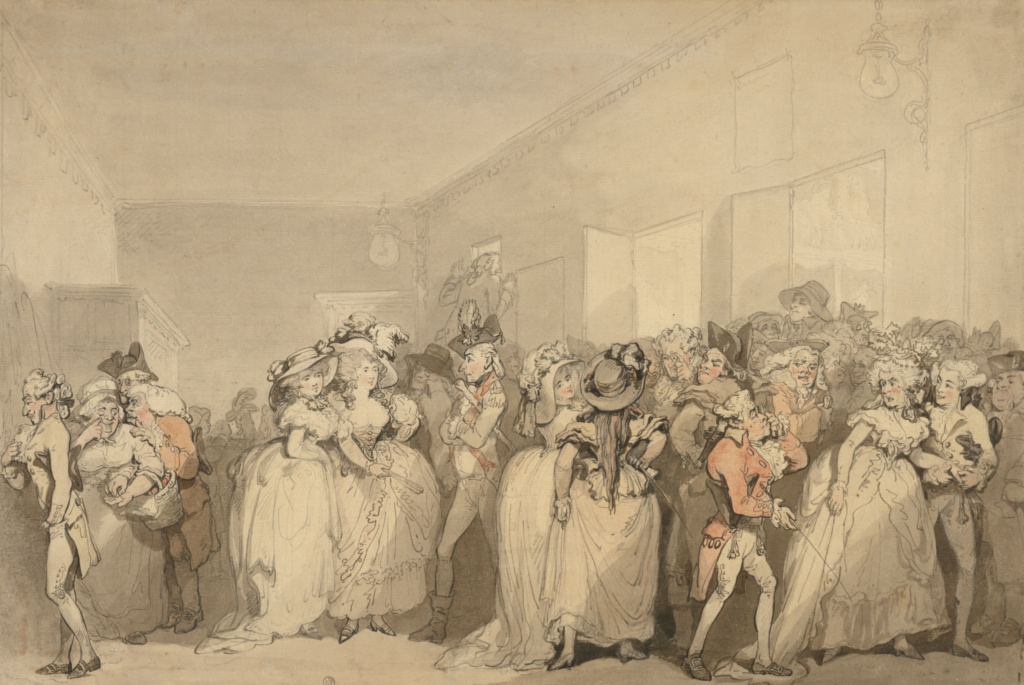 |
| Lobby Loungers in Getty Museum |
"Baddeley, in her brief heydey (1764-1771), was one of the most popular of actresses and singers, and from 1769 to 1773 she was probably the most sought-after courtesan in London. Almost totally lacking in discretion, she skirted disaster during those last four years only because of the vigilant management of Steele, who to her role of formal companion added those of watchdog, financial manager, campaign strategist, and publicist. Steele was well paid, taking whopping fees of her own from the men who courted Baddeley as well as from the sums Baddeley collected; in 17773 she was to claim that the money she had advance to Baddeley (all acquired aftrer 1769) amounted to 3,000 pounds--- but she was probably exaggerating. . . ." (Companions Without Vows: 199)
Rampant desirability & vogue as a top courtesan from 1771-1774.
"Most women who were “in circles of purchasable beauty” only were all the rage for a short time before their popularity waned. Sophia Baddeley’s rampant desirability and vogue as a top courtesan lasted from 1771-1774, a shocking four years. Though everyone in society wanted to see and be seen with her, during this time period “polite” society refused to acknowledge that such women existed. Not only was Sophia known for her beauty but for her many rich and famous lovers. The stories go on and on: Charles Holland, the actor who died of smallpox. After Holland’s death, Baddeley lived with Holland’s doctor, Dr. Hayes in a Marlborough St. house for nine months. Then there were Lord Grosvenor and George Garrick. The latter fought a “bloodless duel” over Sophia with Robert Baddeley. (Interestingly enough, Robert’s second was Mr. Mendez, the Jewish friend of Robert’s who had also been Sophia’s lover.) There was William Hangar, The Lord Coleraine, and his younger brother John, whom Sophia called “Gaby.” She dearly loved Gaby, and though he wasn’t very intelligent and was bad with money, she used her own earnings to support them both on Dean Street. Eventually, he told her that he had to give her up, but she begged him not to. She was so distraught that she took an overdose of laudanum, and it took such a toll on her body that six weeks later she was still unable to walk. “For the remainder of her life she was affected with a bilious complaint, that often disordered her…and made many of her days unhappy.” At this point, she still wasn’t a full time courtesan until 1770, when the Lord Molyneaux, a married man, offered her a large sum of money, to be his mistress. Knowing that he had a wife and still recovering from her laudanum overdose and a broken heart, she refused." (evertyhing2)
Properties owned by Sophia.
" . . . Beside the Grafton Street pied-a-terre, shoe owned a country house at Hammersmith, another at Chelsea, a nest in St. James's Place, a house on the Steyne at Brighthelmstone. Carriages and horses too were hers by the dozen; phaetons, coaches, noddies, chairs. . . ." (The Theater: 139)
Rampant desirability & vogue as a top courtesan from 1771-1774.
"Most women who were “in circles of purchasable beauty” only were all the rage for a short time before their popularity waned. Sophia Baddeley’s rampant desirability and vogue as a top courtesan lasted from 1771-1774, a shocking four years. Though everyone in society wanted to see and be seen with her, during this time period “polite” society refused to acknowledge that such women existed. Not only was Sophia known for her beauty but for her many rich and famous lovers. The stories go on and on: Charles Holland, the actor who died of smallpox. After Holland’s death, Baddeley lived with Holland’s doctor, Dr. Hayes in a Marlborough St. house for nine months. Then there were Lord Grosvenor and George Garrick. The latter fought a “bloodless duel” over Sophia with Robert Baddeley. (Interestingly enough, Robert’s second was Mr. Mendez, the Jewish friend of Robert’s who had also been Sophia’s lover.) There was William Hangar, The Lord Coleraine, and his younger brother John, whom Sophia called “Gaby.” She dearly loved Gaby, and though he wasn’t very intelligent and was bad with money, she used her own earnings to support them both on Dean Street. Eventually, he told her that he had to give her up, but she begged him not to. She was so distraught that she took an overdose of laudanum, and it took such a toll on her body that six weeks later she was still unable to walk. “For the remainder of her life she was affected with a bilious complaint, that often disordered her…and made many of her days unhappy.” At this point, she still wasn’t a full time courtesan until 1770, when the Lord Molyneaux, a married man, offered her a large sum of money, to be his mistress. Knowing that he had a wife and still recovering from her laudanum overdose and a broken heart, she refused." (evertyhing2)
Properties owned by Sophia.
" . . . Beside the Grafton Street pied-a-terre, shoe owned a country house at Hammersmith, another at Chelsea, a nest in St. James's Place, a house on the Steyne at Brighthelmstone. Carriages and horses too were hers by the dozen; phaetons, coaches, noddies, chairs. . . ." (The Theater: 139)
Sophia's lovers were:
1) Anthony Webster.
English actor.
"She took another lover, Anthony Webster, a former law student who had taken to the stage. Webster had previously lived in an open relationship with a married woman, another actress, Elizabeth Davies, later Mrs. Jonathan Battishill, but she had died in 1777. Sophia reputedly had a child by Webster in Ireland but the couple had to return to London within days of the birth and the child died shortly after arriving home. Webster was to die suddenly in 1780 leaving Sophia along and pregnant with his child. After Webster's death she began a relationship with his servant, John." (All Things Georgian)
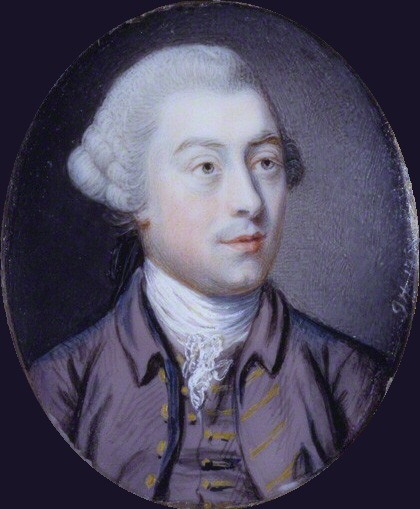 |
| Charles Holland, 1760 |
2) Charles Holland (1733-1769)
English actor.
Son of: John Holland, a baker.
"Holland was said to have been the first man Baddeley truly loved, and he is said to have perfected her acting style, easy and unembarrassed, with an astonishing power to express the passions of love and grief. . . ." (Companions Without Vows: 202)
"The union between Sophia and Robert Baddeley was not a match made in heaven, however. Things came to a head at the height of her fame and Sophia realized that she could support herself with some financial assistance from various benefactors to whom she became a courtesan, primarily the 1st Viscount Melbourne. After leaving Robert Baddeley, Sophia moved in with Charles Holland of Drury Lane Theatre and lived with him until he died of small pox (in 1769). She is not mentioned in his will though which was written whilst he was suffering from smallpox." (Georgian Era)
"Holland died of smallpox at the age of 36. He did not marry. He was engaged to the actress Jane Pope, but she broke off the engagement when she found him boating at Richmond with the actress Sophia Baddeley. He was known for having affairs; the one with Mrs. K. Earle led her husband, William Earle, to prosecute Holland successfully." (Wikipedia)
"Holland was a good-looking, manly action, with a strong, resonant, well-toned voice, and great power of application. . . .) (Wikisource)
4) Dr. Hayes.
5) Duke of Northumberland.
 |
| Edward, Duke of York @Wikipedia |
"Even before the couple’s separation, Sophia was known to be frequently visited by H.R.H. the Duke of York and that he had graciously presented her with a lock of hair which she carefully preserved throughout her career. Sophia was famous for her beauty and her extravagant lifestyle. Despite their separation, the Baddeleys did perform together on the London stage." (Georgian Era)
" . . . According to Steele's account, Baddeley had already had a fling with Edward, Duke of York, when she separated from her husband by 1767 . . . ."
7) George Garrick.
" . . . She was reputed to have had several affairs, precipitating her husband's duel with George Garrick, after which they separated. . . ." (The Routledge Anthology of Restoration and Eighteenth-Century Drama)
8) George Hanger.
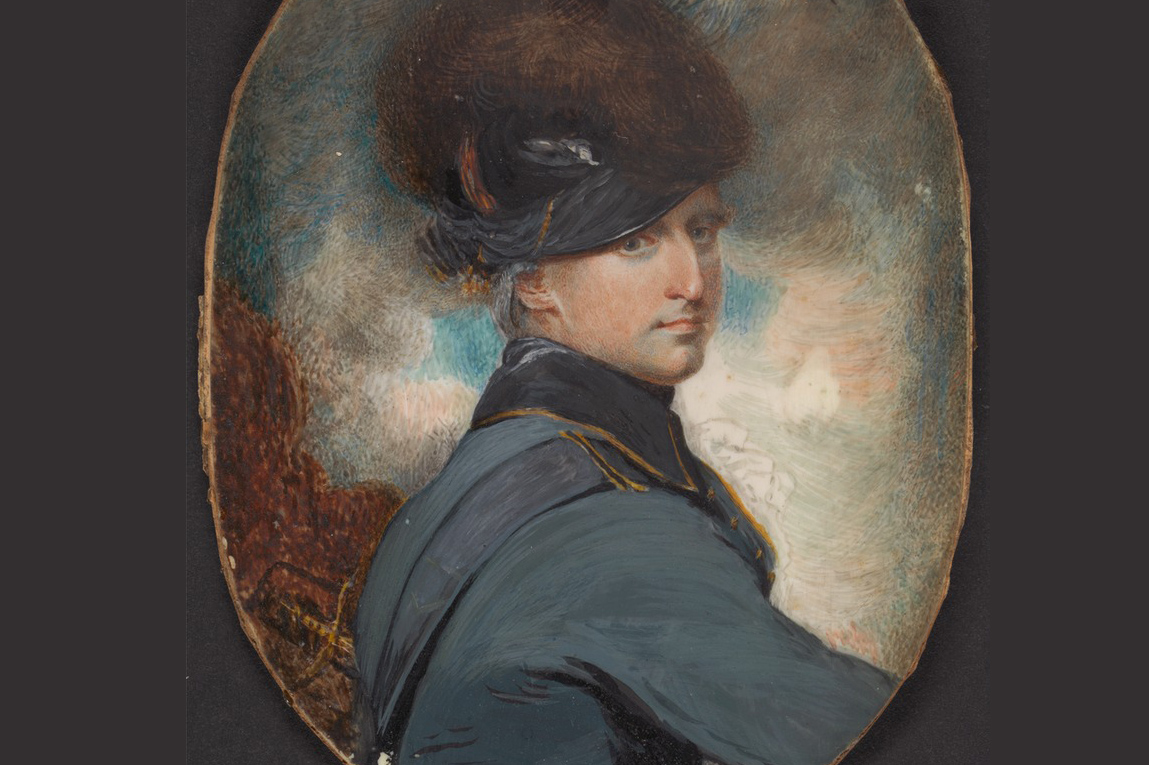 |
| George Hanger |
Lover in 1771-1772.
"Of all the actresses with whom George dallied the most enchanting to him was Mrs. Sophia Baddeley, a woman of exceptional beauty with a vivacious personality. A leading actress and singer at Covent Garden and Drury Lane, she was not averse to selling her sexual favours to a succession of admirers, among whom ranked the Duke of York, the Hon. William Hanger (George’s eldest brother), the Lords Grosvenor and Melbourne, Sir Cecil Bishop, Hananel Mendes da Costa, a wealthy merchant trading in copra with India, and George Garrick, the theatre manager.
During the 1771-72 season Sophia quit the stage. “During this recess,” revealed the press, “Captain Hanger was introduced to her and so fervently pleaded the cause of love that our heroine yielded to his intreaties. The Captain still entertains a very great regard for her, accompanies her to all public places, and protects her with a spirit that does him honour. An instance of his behaviour will illustrate our observation. At the opening [in January 1772] of the Pantheon,” a subscription venue offering fashionable entertainment such as balls, concerts and masquerades, “the proprietors endeavoured to exclude all women whose characters were suspicious, many of them having made their appearance on the first night, which greatly hurt the delicacy of some squeamish women of quality, whose reputations were as equivocal as those of the females they were desirous of expelling. Captain Hanger accompanied Mrs. Baddeley on the second night, when the doorkeeper refused her admittance, saying he was authorised to reject what company he thought improper. Captain Hanger insisted upon knowing his authority, to which the doorkeeper replied he had the proprietors’ orders for what he did. Captain Hanger then ordered the doorkeeper to bring the proprietors to him who had given these commands. The servant excused himself by saying they were not present. Captain Hanger then bid him produce the master of the ceremonies as he was the ostensible manager. Captain Donnellan did not chuse to appear upon the occasion but gave orders for Mrs. Baddeley’s admission ― and this resolute behaviour of Captain Hanger obliged the proprietors to lay aside all thoughts of requiring every female who desired admittance to the Pantheon to bring a certificate of her virtue in hand.”" (George Hanger---His Early Life)
 |
| George, 1st Marquess of Cholmondeley @Wikipedia |
 |
| George, 1st Baron Pigot @Wikipedia |
President of the British East India Company
" . . . Her early affair with the wealthy merchant Mendez was more likely to have been arranged by her husband than herself and he probably saw some pecuniary advantage in those first years even from her affairs with such lovers as the actors John Edwin and Charles Holland and, after Holland's death, with his attending physician, Dr. Hayes. . . ." (Companions Without Vows: 202)
"In 1764, Sophia eloped with Robert Baddeley, a Drury Lane theater player almost twice her age. The marriage was not a happy one, but Robert Baddeley recognized an opportunity before him when a rich Jewish friend of his, 'Mr. Mendez' approached him about becoming involved with Sophia. Robert encouraged her to accept, saying that such rich friends were not to be slighted. The Baddeleys filed private articles of separation in 1770, and Sophia became involved with Mr. Mendez. . . ." (everything2)
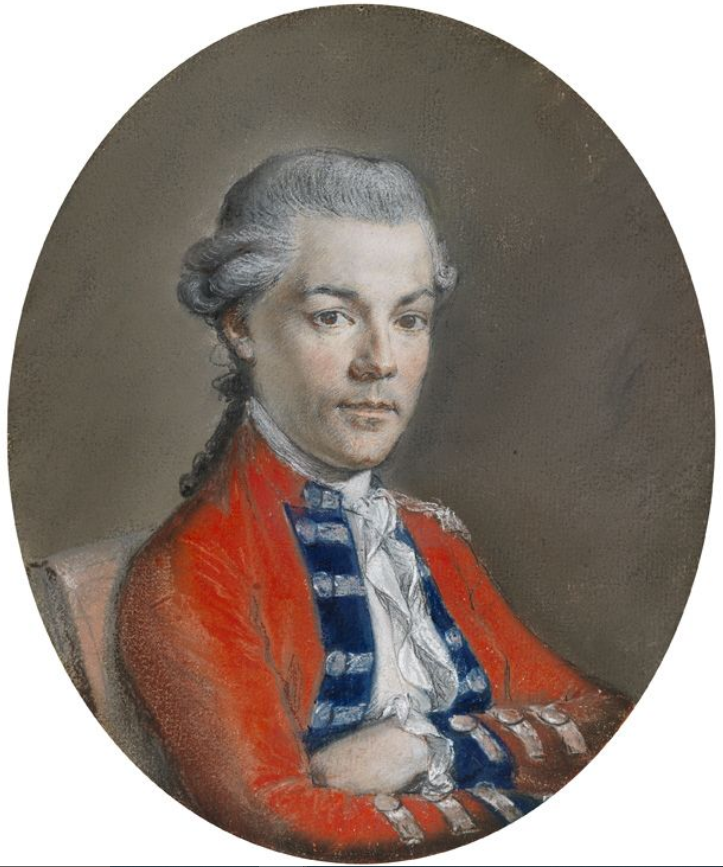 |
| Henry, 2nd Earl of Carhampton @Wikipedia |
3) Henry Laws, 2nd Earl of Carhampton (1737-1821).
British army officer & politician.
" . . . In the summer of 1773, when to escape her debts Baddeley stolen secretly to Ireland with the notorious Colonel Luttrell accompanied by a woman relation of Steele's as companion, the Danish husband of the companion, exacerbated by secrecy, demanded at pistol point knowledge of the whereabouts of his wife. . . ." (Companions Without Vows: 208)
British army officer & politician.
" . . . In the summer of 1773, when to escape her debts Baddeley stolen secretly to Ireland with the notorious Colonel Luttrell accompanied by a woman relation of Steele's as companion, the Danish husband of the companion, exacerbated by secrecy, demanded at pistol point knowledge of the whereabouts of his wife. . . ." (Companions Without Vows: 208)
" . . . Sophia Baddeley had an almost lifetime involvement with two brothers, Captain William Hanger and John Hanger, the latter a dependent elder son who was to succeed his father as Lord Coleraine in 1773. Her involvement with John, her beloved 'Gaby,' one of her beautiful young men, was by far the more serious. In 1769 Baddeley, with combined Drury Lane and Ranelagh earnings of twenty pounds a week, was domiciled with Gaby Hanger (hereinafter Hanger) and bearing most of the housekeeping expenses; Hanger had underwritten the coach hire. They were already in debt for 700 pounds---Hanger was as extravagant as his mistress---when one day he appeared, announced his father had discovered and forbidden the connection, packed up his clothing, and coolly departed, stopping on his way to inform the coachmaster that he was no longer responsible for the carriage. . . When the Drury Lane season ended in 1770, Baddeley pranced off to Ireland with her beloved Gaby, who had discovered either that he could not live without her after all or . . . that because of her great eclat, he found it gratifying to display to the world his continuing power over her. Stelle always hated Hanger as her most dangerous rival, as probably a sharer in Badeley's earnings, and as the man whose defection had provided her own opportunity in the first place and whose reappearance could often disrupt her arrangements. She had the pleasure of quoting Baddeley to the effect that Gaby was most in love with his own beauty, always strutting before the glass and admiring his leg or foot or---when no glass was in view in which to approve his face---his hand. . . ." (Companions Without Vows: 202)
8) John Damer.
" . . . Once John Damer was shown into the drawing room, where he found upon a jeweler's box containing diamond earrings and a price ticket of 250 pounds. . . ." (Companions Without Vows: 204)
" . . . Once John Damer was shown into the drawing room, where he found upon a jeweler's box containing diamond earrings and a price ticket of 250 pounds. . . ." (Companions Without Vows: 204)
12) Joseph Gill
a handsome young Oxford student.
14) Lord March.
17) Peniston Lamb, 1st Viscount Melbourne. (1745-1828)
Lover in 1770?.
14) Lord March.
 |
| Peniston Lamb 1st Viscount Melbourne @Wikipedia |
Lover in 1770?.
British politician
"In due course the Sultana was expected to fling the handkerchief, and it fell at the feet of ---Lord Melbourne, a young nobleman who could scarce spell his name, and who was moreover conspicuously foolish. He divided his time, both in public and in private, between his Sophia and his dearest Betsy, an vowed that he never could tell which he most adored---the beautiful favourite or the handsom ewife. His letters exist still---faded, whimsically illiterate---wherein he pours forth his soul by turns to either, on the principle set by Gay's Macheath. Henceforth when Sophia received, Lord Melbourne acted as host, and entertained the entire male peerage, whose wives and daughters discussed these things over their bohea. At the masquerade or the ridotto he took a turn with Betsey and then a second with Sophia. In what a pretty condition was the monde of the haute volee! . . . ." (The Theater: 141)
"As Lady Melbourne improved her husband's estates, Peniston Lamb was in the throes of an affair with Mrs. Sophia Baddeley, a celebrated actress whose notice was 'sufficient to give credit and eclat to a man of the ton . . . A portrait of Sir Joshua Reynolds . . . captures the charm of this coquettish woman, whose lovers included William and John Hanger, Lord Sefton, Lord Palmerston, and the duke of Queensbury, among others. . . When Peniston met her in 1770, he was only twenty-five and had been married for just ten months."(Byron's "Corbeau Blanc": 17)
"Lord Melbourne took her up and became her lover, protector and provided. He set her up in Grafton Street and financed her very expensive tastes in fashionable clothes, a carriage and servants and expensive jewelry. . . . " (The Berties of Grimsthorpe Castle: 204)
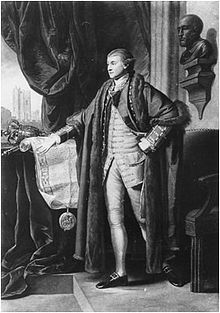 |
| Richard, 1st Earl Grosvenor @Wikipedia |
 |
Richard, 1st Earl Grosvenor |
13) Richard Grosvenor, 1st Earl Grosvenor (1731-1802)
British peer, racehorse owner and art collector
"On 19 July 1764 Grosvenor married Henrietta Vernon, daughter of Henry Vernon of Hilton Park, Staffordshire; they had four sons. However the marriage was not happy, and Henrietta had an affair with Henry, Duke of Cumberland, the younger brother of George III. The couple were discovered in flagrante delicto in 1769, which led to Grosvenor bringing an action against the Duke for "criminal conversation" (that is, adultery).He was awarded damages of £10,000, which together with costs, amounted to an award of £13,000 (£1,630,000 in 2015).But Grosvenor was also known to be guilty of adultery himself, regularly seeking out prostitutes around Leicester Square,[9] so he could not sue for divorce. The couple separated and he settled an annual allowance of £1,200 (£150,000 in 2015) on his estranged wife, who entered the demi-monde and was a leading member of The New Female Coterie." (Wikipedia)
18) Robert Bertie, 4th Duke of Ancaster (1756-1779)
British peer.
"As a courtesan, Sophia Baddeley was renowned for her beauty. One of Sophia's many paramours, the Duke of Ancaster, compared her eyes to that of the basilisk. 'Absolutely one of the wonders of the age. No man can gaze on you unwounded . . . whose eyes kill those whom they fix on.'. . . . " (everything2)
19) Stephen Sayre. (1736-1818)
Lover in 1774?.
19) Stephen Sayre. (1736-1818)
Lover in 1774?.
American merchant, banker & diplomatic agent.
"Another of her suitors was Stephen Sayre, an American who was the sheriff of London. He does not come across well in the Memoir written by Elizabeth Steele; she obviously didn't like him. In February 1775 he married an heiress, described as an old lady whom he married purely for her money, and Elizabeth claims that Sophia was 'big with his child' when he did so. It may be that Elizabeth was trying to portray her friend as a wronged woman for it appears that Sophia perhaps continued to maintain a relationship with Sayre for a time after he marriage. Stephen and Sophia's relationship produced a child, named Stephen for his father and his baptism, can be found listed for the 25th January 1778 at Percy Chapel, St. Pancras, Sophia appearing as 'Sophia Sayre' presumably to give the child some legitimacy. . . ." (All Things Georgian)
20) Sir Thomas Mills.
21) Thomas Storer.
22) William Brereton.
English actor
" . . . Sophia had certainly lived for a while with the actor William Brereton. . . ." (A Biographical Dictionary of Actors: 206)
23) William Fawkener.
21) Thomas Storer.
22) William Brereton.
English actor
" . . . Sophia had certainly lived for a while with the actor William Brereton. . . ." (A Biographical Dictionary of Actors: 206)
23) William Fawkener.
" . . .Steele must have realized that Baddeley had to be allowed the gratification of her love affairs with the young men who periodically attracted her passionate admiration and to whom she also may have given money. Hanger too his place at times among this group, but between 1769 and 1773 Baddeley was in love for months each with William Fawkener, Thomas Storer, and a handsome young Oxford student, Joseph Gill." (Companions Without Vows: 204)
24) William Hanger, Lord Coleraine.
" . . . Mr. William Hanger, afterwards Lord Coleraine, Mrs. Baddeley's first aristocratic lover, brought her to Sir Joshua, to whom he was sitting himself while his mistress's portrait was in progress, and paid for the picture." (Life and Times of Sir Joshua Reynolds: 431)
Lillie Langtry Gallery.

.jpg/711px-Henry_St_John%2C_1st_Viscount_Bolingbroke_(1678).jpg)

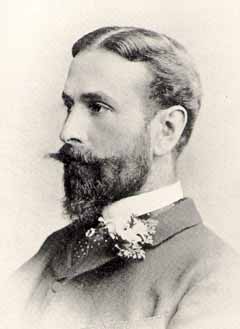


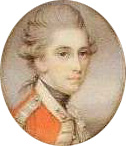
No comments:
Post a Comment